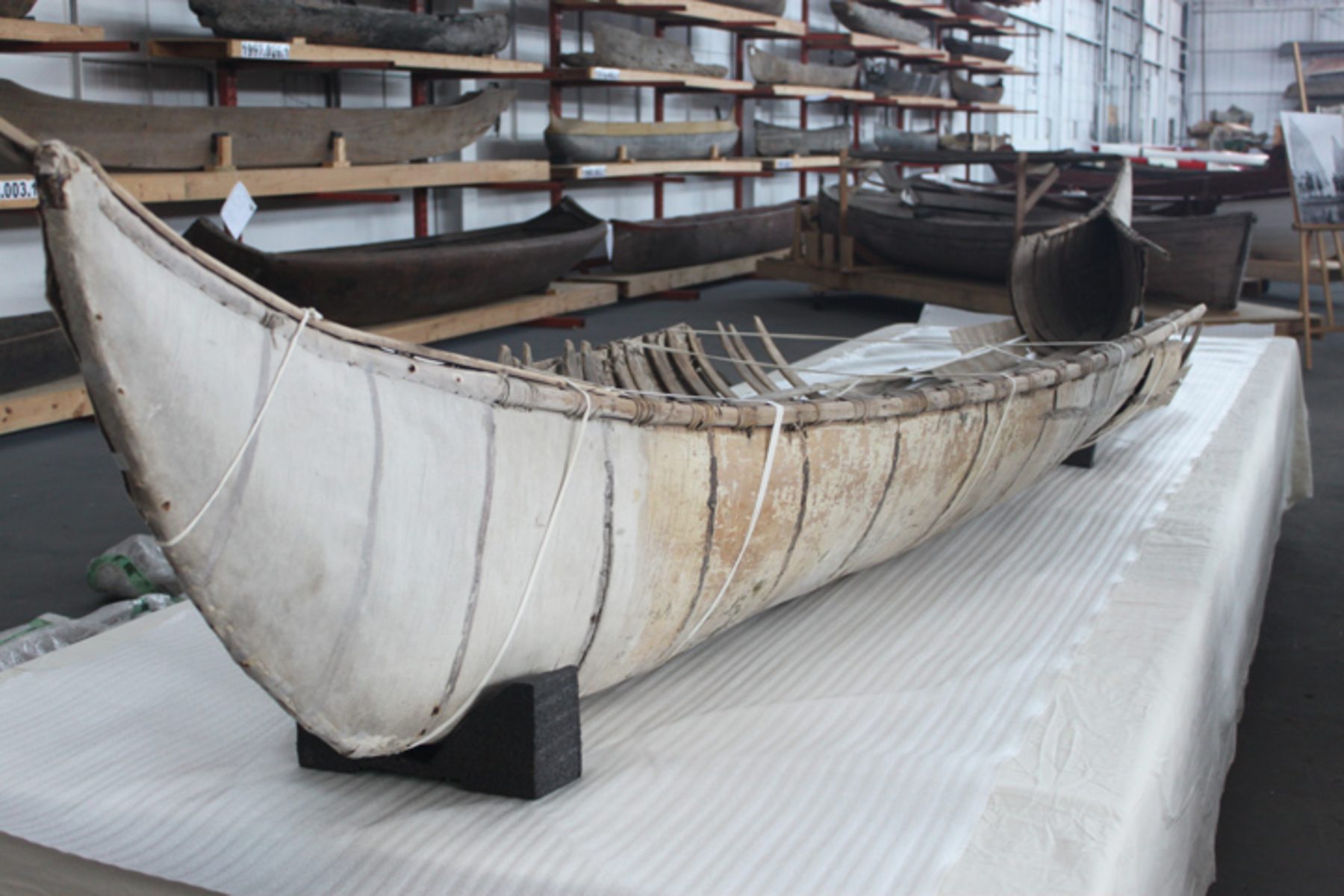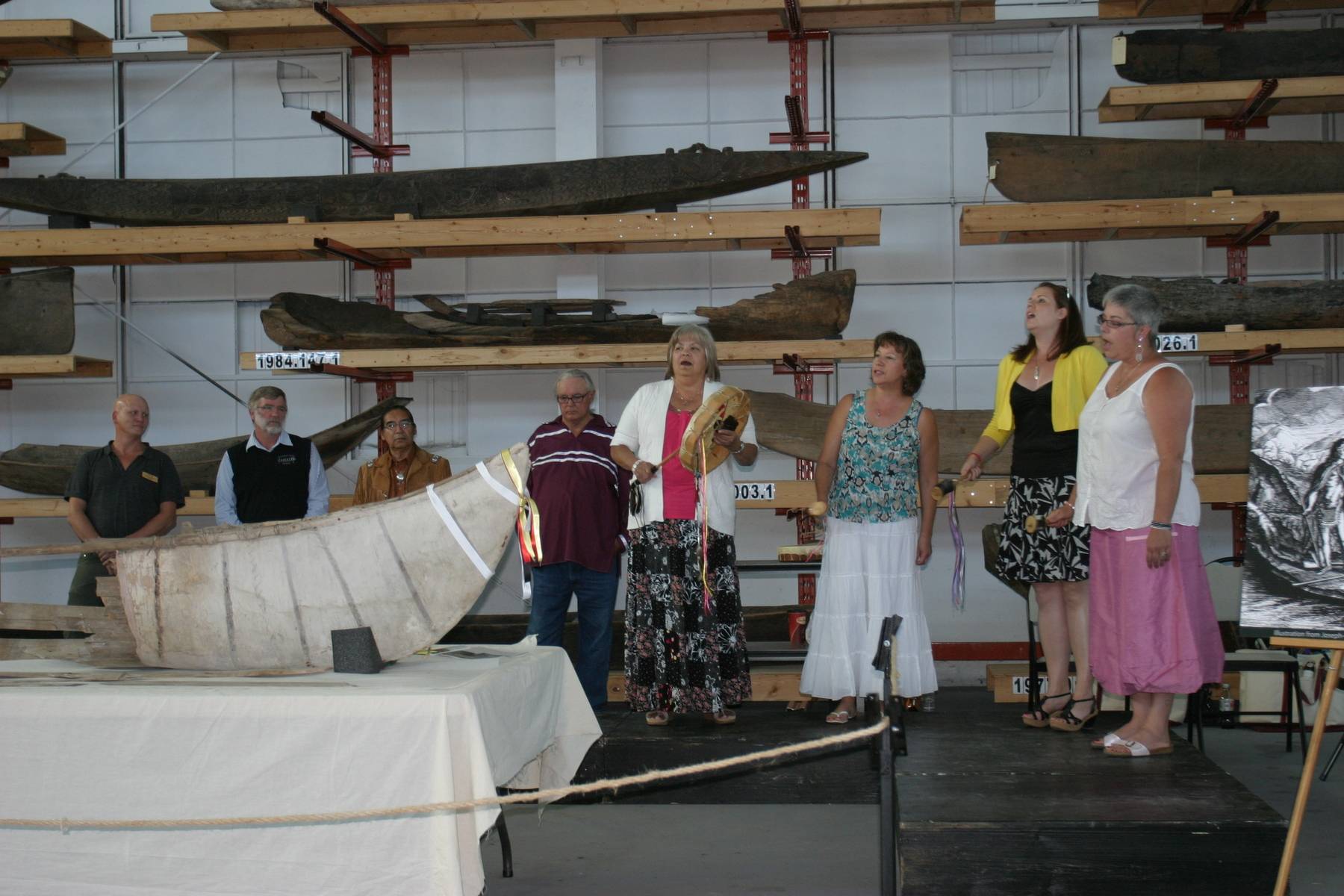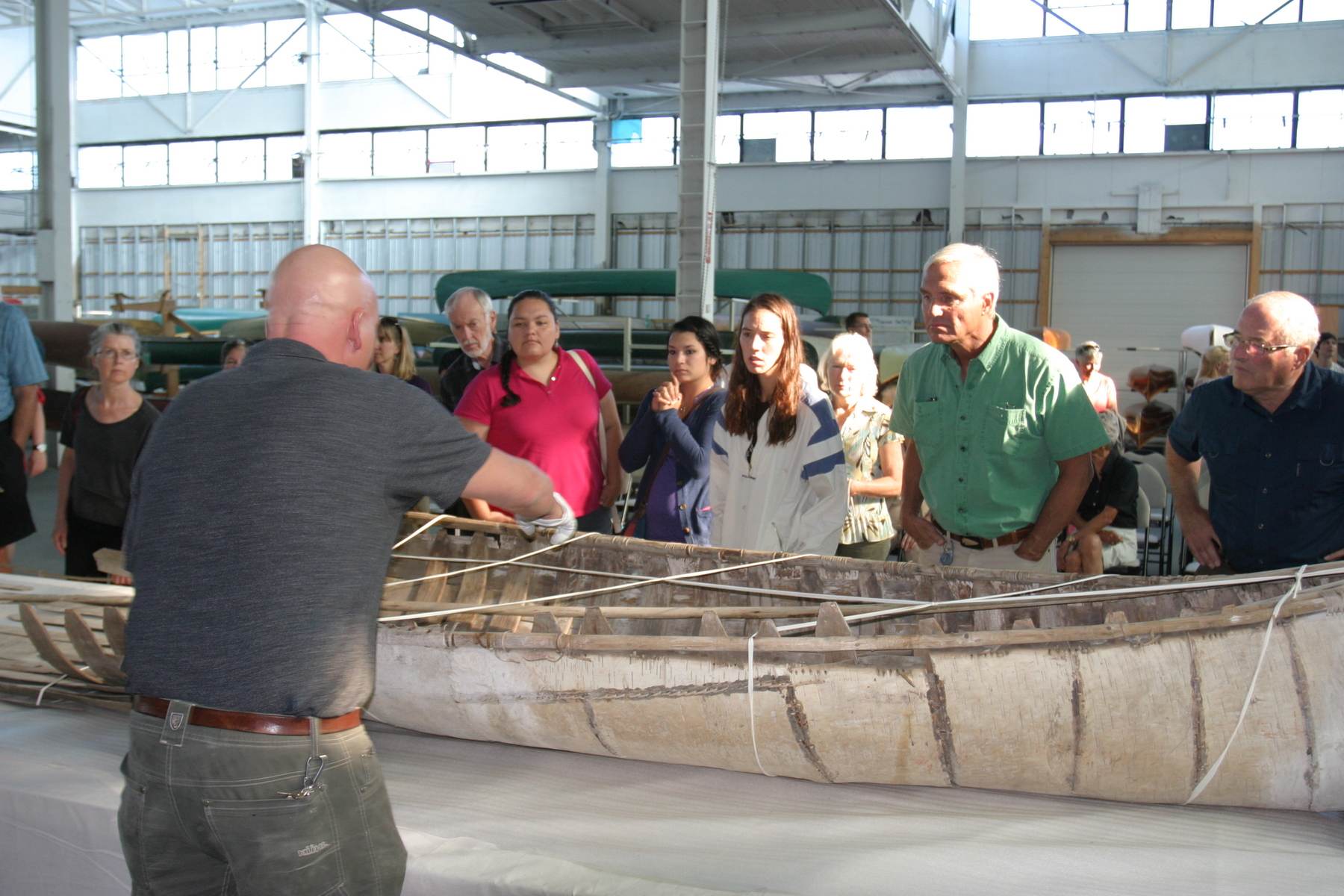On August 29th, The Canadian Canoe Museum opened the doors of its collections storage facility to the public to host a very special event. Inside the building, the smell of a recent sweetgrass smudging enhanced the usual reverential atmosphere of this space.

Surrounded by the world’s largest collection of canoes and kayaks and laid out for guests were the elegant remains of a bark canoe recently returned to Canada after more than two centuries years in the hands of a family in Cornwall, England. The canoe, which dates back to the late 1700s, is one of the oldest known birch bark canoes and is a significant piece of Canadian history. As a young officer, Lt. John Enys first came to Canada in 1776 with his regiment to defend a besieged Quebec City during the American Revolution. Since his return to the UK after the war and for the last 230 years this canoe has been kept at the Enys estate.
The bark canoe’s fragile hull has been inevitably damaged over the past two centuries. Its remains were removed from the family’s storage building and carefully prepared for display by the National Maritime Museum Cornwall (NMMC) in the summer of 2011. Enys’ descendents desired that the canoe ultimately return to an appropriate Canadian collection and chose to donate this important artifact to The Canadian Canoe Museum. In the summer of 2012 the canoe crossed the Atlantic once again, this time by aircraft rather than troopship, thanks to the combined efforts of the Canadian High Commission in London, the Canadian Forces, the Royal Air Force, the generous support of the W. Garfield Weston Foundation and the NMMC.

In the quiet hours before the event began, Curve Lake First Nations elder Doug Williams was joined by several helpers in welcoming the canoe to this area with words, prayers and song. The drumming group Unity formally started things off with a Welcome Song, sung for the guests assembled and also for the canoe. Over the course of the event, Williams and also Stephen Augustine (curator, Canadian Museum of Civilization) joined Canadian Canoe Museum executive director James Raffan and curator Jeremy Ward in discussing the significance of this artifact and its return to Canada.

The canoe is not currently displayed and will undergo an extensive assessment and treatment period over the next months with the aim to prepare it for future exhibition. For additional description and photographs of the event, please read Evan Holt’s excellent account.






